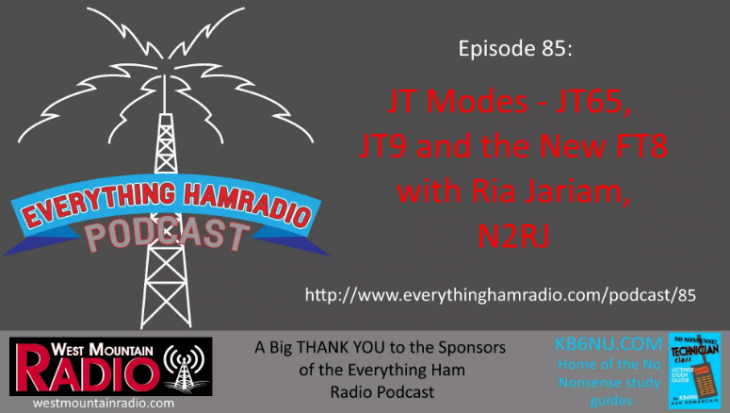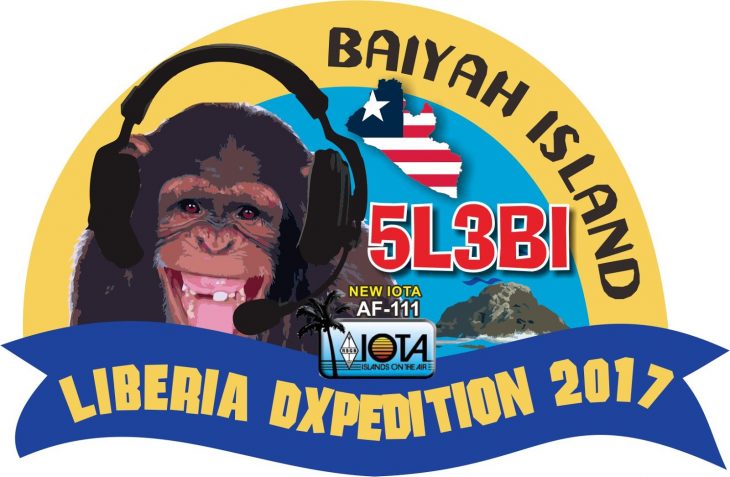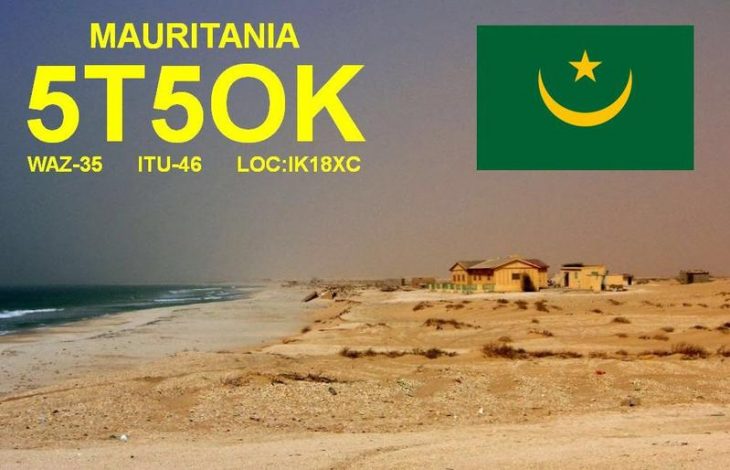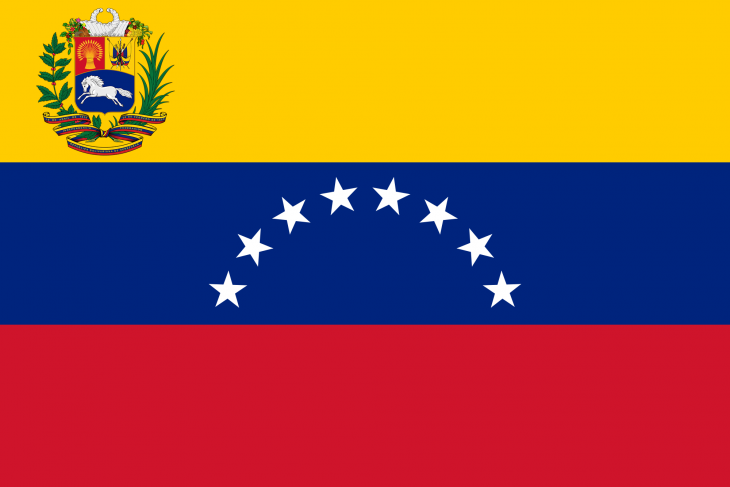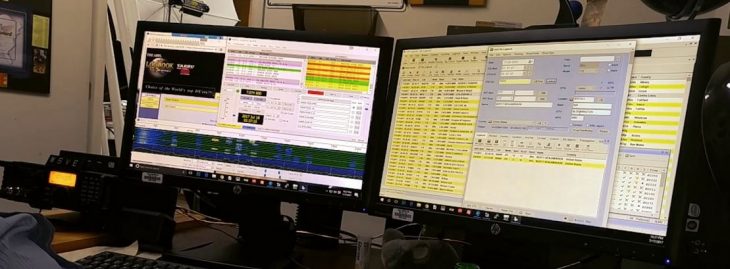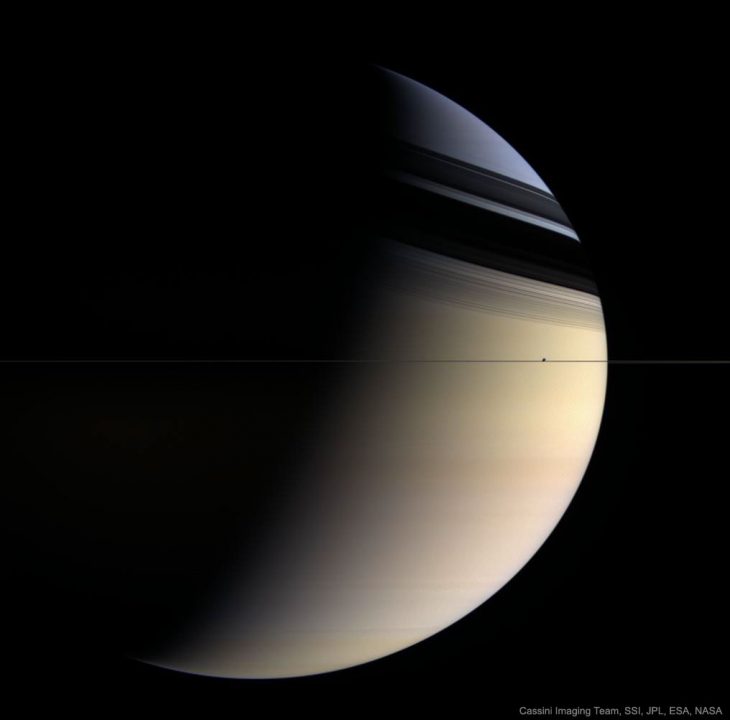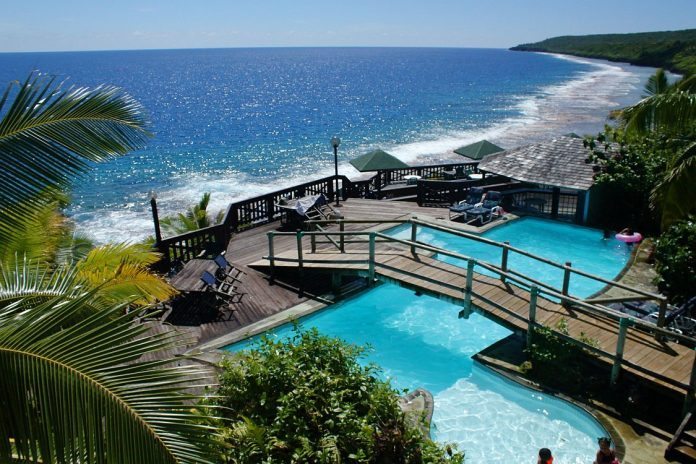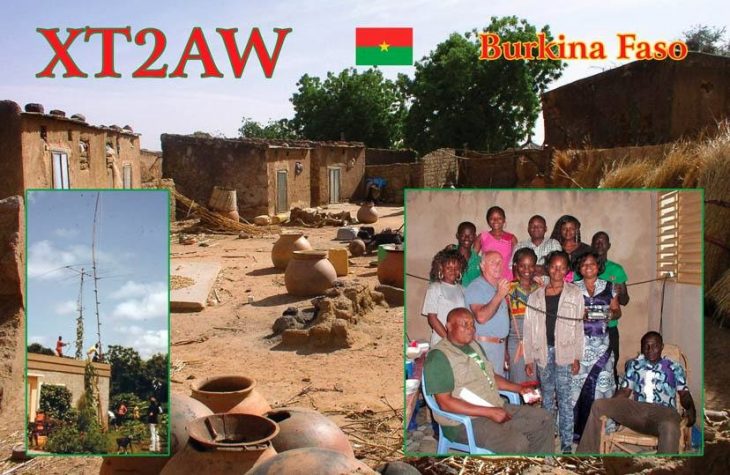Talking about the JT Modes and the new FT8 mode that is taking the World by storm.
http://www.everythinghamradio.com/2017/09/eth085-jt-modes/
In this episode, I have the privilege of talking with Rai Jariam, N2RJ, for a third time. This time we are talking about the JT Modes, JT65, JT9 and the newest addition FT8.
Here is a typical conversation over JT65:
“CQ K5CLM EM12” CQ call from K5CLM with his locator
“K5CLM N2RJ FN21” N2RJ replies to K5CLM with her locator
“N2RJ K5CLM -12” K5CLM sends his signal report
“K5CLM N2RJ R-08” N2RJ replies with her signal report
“N2RJ K5CLM RRR” K5CLM says Reception Report Received (all OK)
“K5CLM N2RJ 73” N2RJ says Best regards
“N2RJ K5CLM 73” K5CLM says Best regards
Each message of up to 13 characters is sent over the course of 50 seconds, starting at the top of each minute, so the above conversation would take seven minutes. One person sends on the odd minute, and the second person sends on the even minute.
The JT modes are not for rag chewing or typical conversations, they are for chasing contacts and that’s about it. They are not designs to make contacts to talk to, but just to exchange the above information. Call sign, Grid Square and Signal Report.
(Listen from 7mins 45 seconds into the Podcast)

